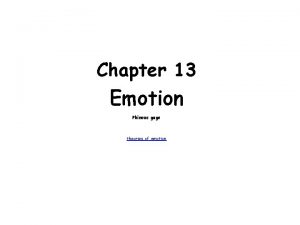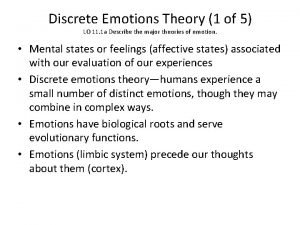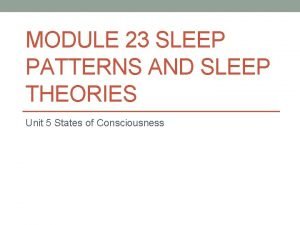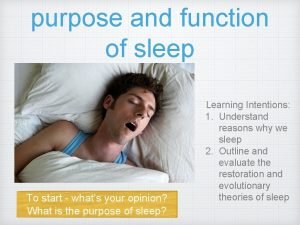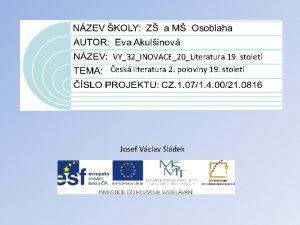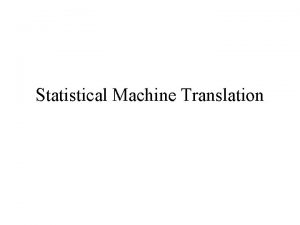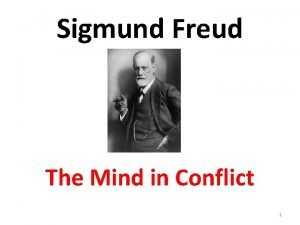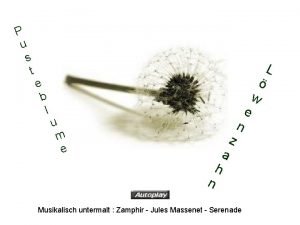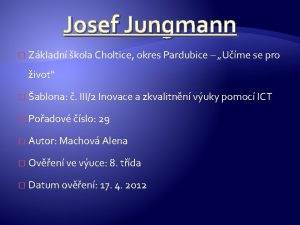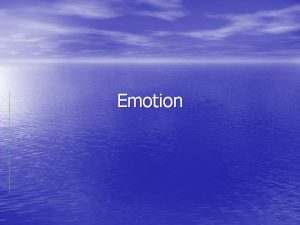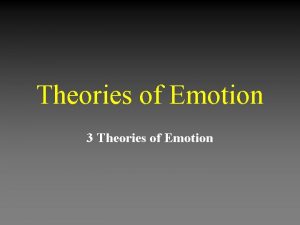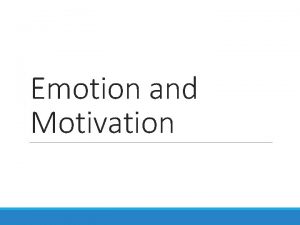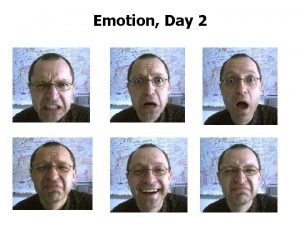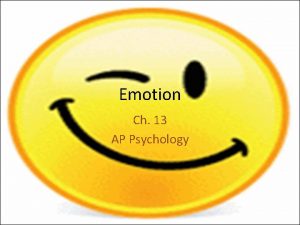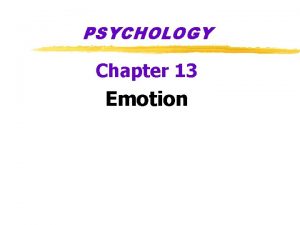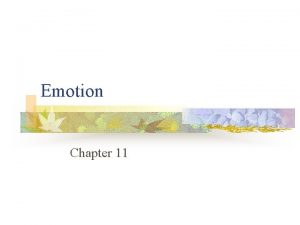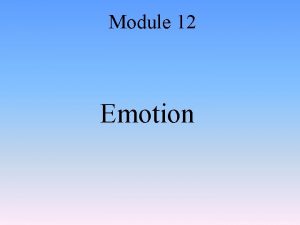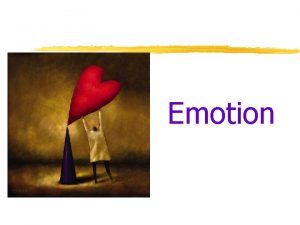Module 31 Theories and Physiology of Emotion Josef
















- Slides: 16

Module 31 Theories and Physiology of Emotion Josef F. Steufer/Getty Images

Theories and Physiology of Emotion: Arousal, Behavior, and Cognition 31 -1: HOW DO AROUSAL, EXPRESSIVE BEHAVIOR, AND COGNITION INTERACT IN EMOTION? • Emotion a response of the whole organism, involving (1) physiological arousal, (2) expressive behaviors, and (3) conscious experience • Emotions are adaptive responses that support survival • Emotions are a mix of: – Bodily arousal (heart pounding) – Expressive behaviors (quickened pace) – Conscious experience (both thoughts and feelings)

Theories and Physiology of Emotion: Arousal, Behavior, and Cognition Theories of emotion generally address two major questions: – Does physiological arousal come before or after the emotional feelings? – How do thinking (cognition) and feeling interact? Historical emotion theories, as well as current theories, have sought to answer these questions.

Theories and Physiology of Emotion: Arousal, Behavior, and Cognition Historical Emotion Theories James-Lange Theory: – Arousal comes before emotion – Experience of emotion involves awareness of our physiological responses to emotion-arousing stimuli Cannon-Bard Theory: – Arousal and emotion happen at the same time – Emotion-arousing stimulus simultaneously triggers (1) physiological responses and (2) the subjective experience of emotion – Human body responses run parallel to the cognitive responses rather than causing them

Theories and Physiology of Emotion: Arousal, Behavior, and Cognition Schachter-Singer’s Two-Factors: Arousal + Label = Emotion 31 -2: TO EXPERIENCE EMOTIONS, MUST WE CONSCIOUSLY INTERPRET AND LABEL THEM? – Two-factor theory: The Schachter-Singer theory that to experience emotion one must (1) be physically aroused and (2) cognitively label the arousal. – Emotions have two ingredients: Physical arousal and cognitive appraisal. – Arousal fuels emotion; cognition channels it. – Emotional experience requires a conscious interpretation of arousal. – Spillover effect: Spillover arousal from one event to the next—influencing a response.

The Spillover Effect Arousal from a soccer match can fuel anger, which can descend into rioting or other violent confrontations.

Theories and Physiology of Emotion: Arousal, Behavior, and Cognition Zajonc, Le. Doux, and Lazarus: Does Cognition Always Precede Emotion? Zajonc and Le. Doux • Sometimes emotional response takes neural shortcut that bypasses the cortex and goes directly to amygdala. • Some emotional responses involve no deliberate thinking. Lazarus • Brain processes much information without conscious awareness, but mental functioning still takes place. • Emotions arise when an event is appraised as harmless or dangerous.

The Brain’s Pathways for Emotions The two-track brain processes sensory input on two different pathways. (a) Some input travels to the cortex (via the thalamus) for analysis and is then sent to the amygdala. (b) Other input travels directly to the amygdala (via the thalamus) for an instant emotional reaction.

Theories and Physiology of Emotion: Arousal, Behavior, and Cognition Zajonc, Le. Doux, and Lazarus: Does Cognition Always Precede Emotion? Two Pathways for Emotions

Theories and Physiology of Emotion Embodied Emotion The Basic Emotions 31 -3: WHAT ARE SOME OF THE BASIC EMOTIONS? Carroll Izard (1977) isolated 10 basic emotions that include physiology and expressive behavior. – These basic emotions are joy, interest-excitement, surprise, sadness, anger, disgust, contempt, fear, shame, and guilt. – These emotions are mostly present in infancy.

Some Naturally Occurring Infant Emotions

Theories and Physiology of Emotion Embodied Emotions and the Autonomic Nervous System 31 -4: WHAT IS THE LINK BETWEEN EMOTIONAL AROUSAL AND THE AUTONOMIC NERVOUS SYSTEM? • The arousal component of emotion is regulated by the autonomic nervous system’s sympathetic (arousing) and parasympathetic (calming) divisions. • In a crisis, the fight-or-flight response automatically mobilizes the body for action. • The ANS mobilizes body for action with stress hormones from adrenal glands, sugar from liver into bloodstream, increased heart rate and blood pressure, and slowed digestion. • When crisis passes, the parasympathetic division of your ANS calms your body and hormones gradually leave bloodstream.

Emotional Arousal Like a crisis control center, the autonomic nervous system arouses the body in a crisis and calms it when danger passes.

Theories and Physiology of Emotion Embodied Emotion The Physiology of Emotions 31 -5: DO DIFFERENT EMOTIONS ACTIVATE DIFFERENT PHYSIOLOGICAL AND BRAIN-PATTERN RESPONSES? Different emotions have subtle indicators. – Brain scans and EEGs reveal different brain circuits for some different emotions – Depression and general negativity: Right frontal lobe activity – Happiness, enthusiastic, and energized: Left frontal lobe activity – But it can be difficult to discern physiological differences among fear, anger, and sexual arousal; different emotions can share common biological signatures

Theories and Physiology of Emotion Embodied Emotion Lie Detection 31 -6: HOW EFFECTIVE ARE POLYGRAPHS IN USING BODY STATES TO DETECT LIES? Polygraph – A machine commonly used in attempts to detect lies – Measures several of the physiological responses accompanying emotion – Physiological responses include perspiration and cardiovascular breathing changes

Can a Lie Detector Reveal Lies? In one study, polygraph experts interpreted the polygraph data of 100 people who had been suspects in theft crimes (Kleinmuntz & Szucko, 1984). Half the suspects were guilty and had confessed; the other half turned out to be not guilty. Had the polygraph experts been the judges, more than one-third of the innocent would have been declared guilty, and onefourth of the guilty would have been declared not guilty.
 Two factor theory of emotion example
Two factor theory of emotion example Discrete theory of emotion
Discrete theory of emotion Psychodynamic perspective
Psychodynamic perspective Module 23 sleep patterns and sleep theories
Module 23 sleep patterns and sleep theories Module 23 sleep patterns and sleep theories
Module 23 sleep patterns and sleep theories Module 23 sleep patterns and sleep theories
Module 23 sleep patterns and sleep theories Social cognitive personality
Social cognitive personality C device module module 1
C device module module 1 Josef václav sládek prezentace
Josef václav sládek prezentace Franz josef och
Franz josef och Franz josef och
Franz josef och Josef breur
Josef breur Drachenfeuer hohlbein zusammenfassung
Drachenfeuer hohlbein zusammenfassung Josef guggenmos wer bin ich lösung
Josef guggenmos wer bin ich lösung Josef guggenmos löwenzahn
Josef guggenmos löwenzahn Josef kote peintre
Josef kote peintre Josef jungmann prezentace
Josef jungmann prezentace
